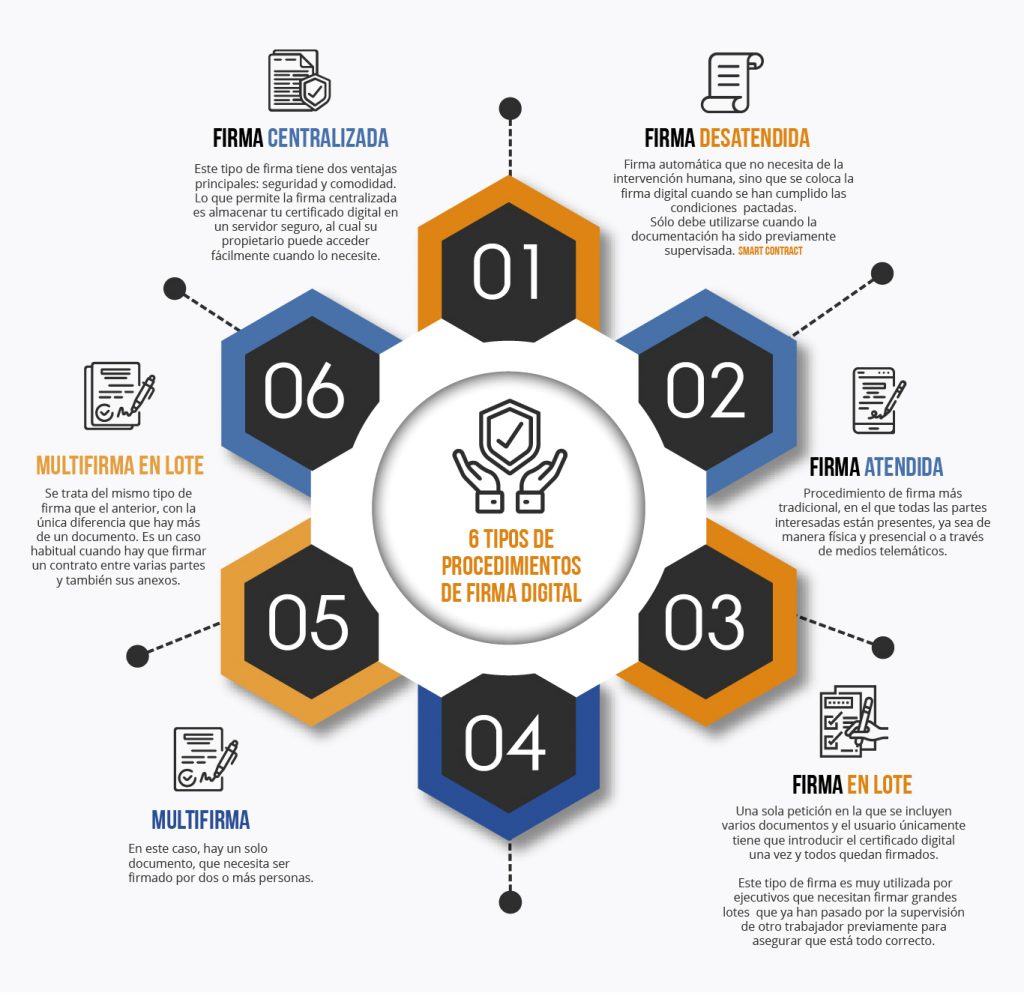One of the greatest benefits of the digital signature is its versatility, since it can be used in different ways and in different processes to adapt to the needs of each of its users. In the following post, we tell you through an infographic what types of digital signature procedures exist and which ones are supported by Viafirma’s solutions.
Digital transformation has brought with it many advantages and also many changes in the ways in which we work and do business. Papers have been disappearing in favor of digital communications, communication with the public administration is much easier and faster and also the signature has ceased to be only handwritten and has taken advantage of all the benefits that the digital world brings.
Statistics show that the popularity of digital signatures has been growing over the years and continues on an upward trend. According to data collected by Statista, from 2009 to 2017 there has been an increase in the use of digital signatures in Spanish company communications of more than 20%, peaking at 77.1%.
Thanks to the legal recognition of the digital signature and its equivalence to the handwritten signature, this tool has become more and more important in the business world.
But, do you know what are the advantages and procedures of digital signature? We will tell you about them below.
Advantages of digital signature
The digital signature has become popular not only because of its legal validity, but also because of the numerous advantages it offers over the traditional signature. First of all, digitization always saves costs, since it does not require face-to-face procedures to be carried out. Therefore, it is not necessary to be in the same room when it is time to reach a collaboration agreement and to finalize it with a signature.
In addition to the cost savings in infrastructure and materials that the use of digital signatures entails, it also provides the user with something very important: mobility. In this way, especially commercial department workers who have to be constantly on the move visiting customers, can use the signature from wherever they are.
Tipos o procedimientos de firma digital
Although we usually talk about digital signatures in general, there is no single type of digital signature, and this is the last of the advantages we want to talk about today: its versatility. Sometimes, human intervention is not even necessary for a contract to be signed.
In the following infographic, you can see some types or procedures of digital signature, all of them supported by Viafirma’s solutions.

Unattended signature
One of the digital signature procedures is the so-called unattended signature. This is an automatic signature that does not require human intervention, but the digital signature is affixed when the agreed conditions have been met. It should only be used when the documentation has been previously supervised.
Smart Contract
Unattended signature is the principle on which Smart Contracts are based. These smart contracts have the ability to execute themselves autonomously. For example, when goods arrive at a certain point, the document is automatically signed and closed.
Attended signature
Procedimiento de firma más tradicional, en el que todas las partes interesadas están presentes, ya sea de manera física y presencial o a través de medios telemáticos.
- Batch signing
This is a single request in which several documents are included and the user only has to enter the digital certificate once and they are all signed. This type of signature is widely used by executives who need to sign large batches of contracts or payrolls and that have already gone through the supervision of another worker previously to ensure that everything is correct.
- Multisignature
In this case of digital signature procedures, there is only one document, which needs to be signed by two or more persons.
Batch multi-signature
This is the same type of signature as the simple multi-signature, with the only difference that there is more than one document. It is a common case when a contract has to be signed between several parties and also its annexes.
- Centralized signature
The last of the digital signature procedures is the centralized signature. This type of signature has two main advantages: security and convenience. What centralized signature allows is to generate and store your digital certificate in a secure server, which its owner can easily access through ROBUST AUTHENTICATION when needed.
